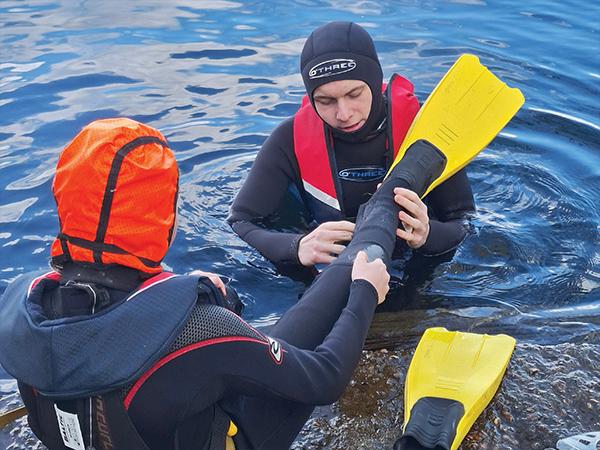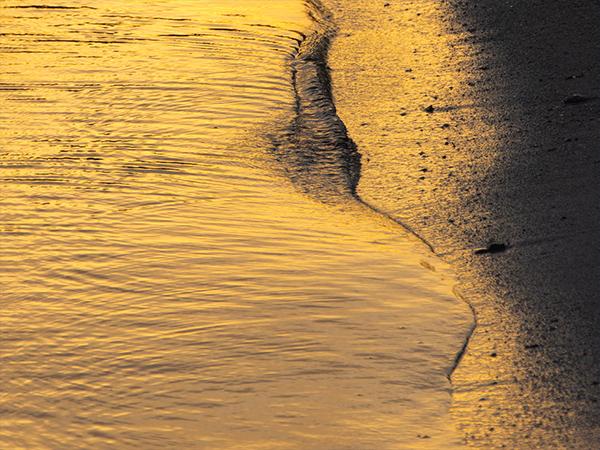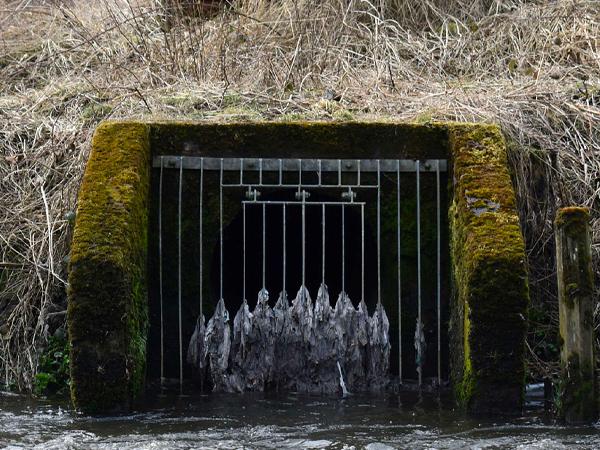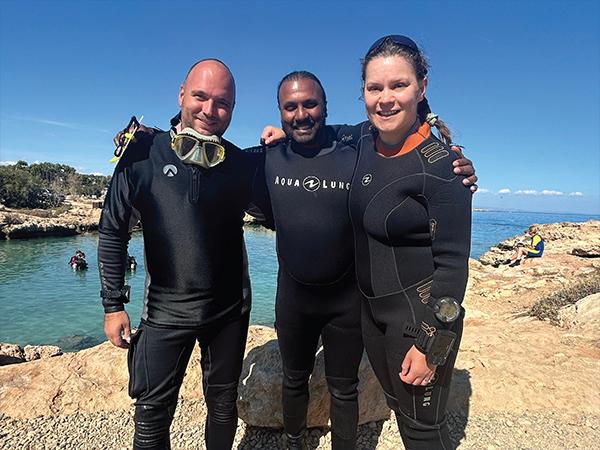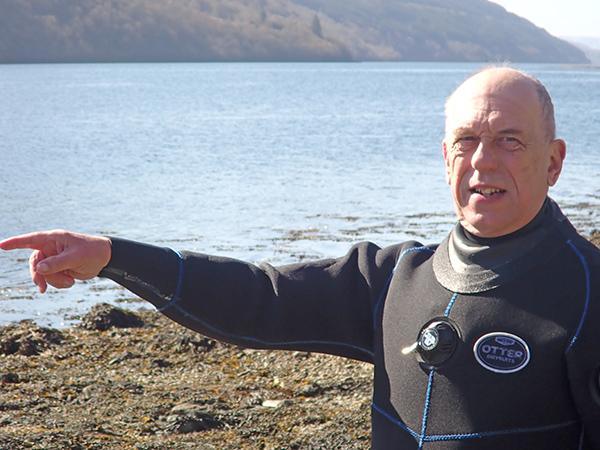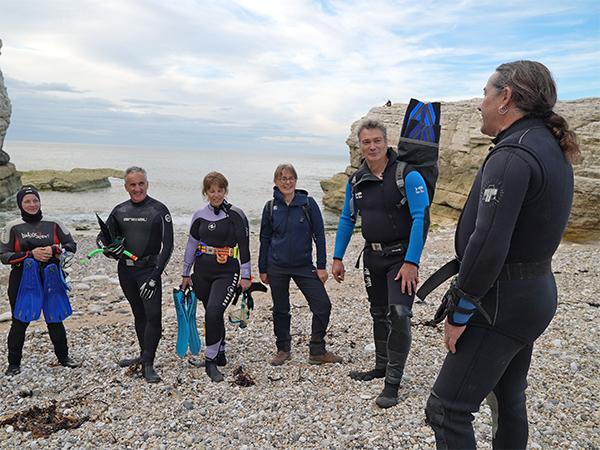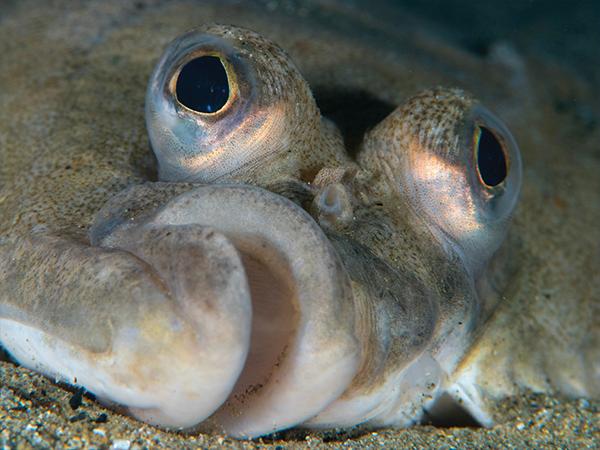We asked a panel of experienced divers to answer some of the questions asked by those thinking of taking the plunge in UK waters.
- How does a drysuit actually keep you dry?
The materials used to make a drysuit vary from neoprene to laminated layers, each designed to add comfort and flexibility. However, all materials have one thing in common, they are designed to be waterproof. This could be as simple as a rubber layer or a coating of polyurethane.
The majority of the suit is therefore a waterproof membrane. Unfortunately for suit designers, divers must have their faces and hands outside of the protective layers of the suit and so a solution is needed to make sure the suit does not fill up with water. Therefore, the wrists and neck are accommodated by seals made of a flexible material such as latex or thin neoprene to snugly fit over bumps and curves to prevent water ingress.
The diver also prefers to be able to get in and out of the suit with ease and so a heavy duty waterproof zip is fitted across the back or from the shoulder to the opposite hip. In theory these features make for a dry diver, but water can find its way in through small holes in the fabric, if seals do not sit properly against the skin or if the zip is compromised such as by a damaged or missing tooth. - I hear it can be cold diving in Britain – how do I keep warm?
The key to staying warm while diving is not to let your core temperature drop. Getting your diving suit to fit properly is really key to this – using a worn out, baggy wetsuit with holes in it will allow cold water to flush through instead of staying where it is and warming up. If using a drysuit, a decent base layer with a good insulating layer will keep you toasty down to chillier temperatures. It has to fit properly, of course, and keep you dry – for some drysuits, especially bargain ones off the Internet, ‘dry suit’ is an aspiration rather than a description! Between dives, a suit that is still damp on the outside will evaporate water and get even colder.
Getting out of the weather really helps, as does a warm hat and gloves. Chucking an old oversized ski jacket over your suit to keep the chill out works well for me, as does warming up with a half time flask of something warm.
It’s also taken me 25 years to work out that getting into your undersuit in the accommodation before driving to the cold dive site keeps the heat in before you even start diving so you stay warmer for longer.
Finally remember that we are doing this for fun. If you’re too cold, then there’s nothing wrong with coming back another time when you’re warm and happy. - I believe UK visibility can be low, how do I find my way around?
UK visibility can be low, but it can also be fantastic and you’re unlikely to get lost. You might not know exactly where you are, but as long as you keep with your buddy you can still have a fantastic dive.
So most importantly whatever the visibility stay close to your buddy and keep in communication with them. That means that you’ll be able to show each other all the exciting things that you see on your dive and you’ll be able to chat about them over a cup of tea on the boat and make all the other divers jealous.
If you do want to stay on a particular site and see particular things, then make sure you listen to the dive manager’s brief and follow their instructions. If they say keep the wall to your left, or drift with the current, then do that. Or if you’re on a wreck look at things as you swim and try to remember landmarks on the seabed.
Ultimately, most of the time you can’t get lost in a way that matters; once you need to come up, send up a delayed surface marker buoy (dSMB) and ascend slowly to the surface. Once you’re there signal to the boat, or work out which way you need to swim towards shore. If you’ve surfaced any distance away from where you should have done you might have to put up with some stick from other divers, but that’s all part of the fun! - Is there anything worth seeing in UK waters?
You’ll be pleased to hear that my answer is an emphatic yes. If you go to any BSAC club, you’re bound to find a member who will tell you that in their opinion, British diving is the best in the world. To be honest, it’s a very subjective call… but there’s something about the sheer variety of experiences to be had in British water that makes its advocates especially proud of their home waters.
In the first instance there are shipwrecks; not ancient galleons (wood rots away in salt water, so ancient shipwrecks are hard to find) but there are plenty of metal-hulled vessels from the two World Wars. Some of the wrecks are still surprisingly intact, but many more have become debris trails, where the innards of the ship have been laid bare by time and tide. The one thing we’re lacking is shipwrecks from the modern era, because GPS technology and the rescue services are so good at preventing shipwrecks that they are a rare occurrence these days.
What about marine life? You may be surprised to learn that our coast has reefs dominated by corals, anemones and sponges. We have cold water corals, not the reef-forming stony coral of the tropics but individual ‘trees’ of soft coral that appear in shades from a stark white to the deepest red. You will find fish on every reef, from the rock-dwelling tompot blenny to sleek pollock and seabass that hunt in open water. We even have sharks, from the immense basking shark to the super-cute smallspotted catshark – they are all quite harmless.
Finally, we have the friendliest animal in the sea, the grey seal, at sites all over the UK. Believe me, there is an incredible world to discover.

